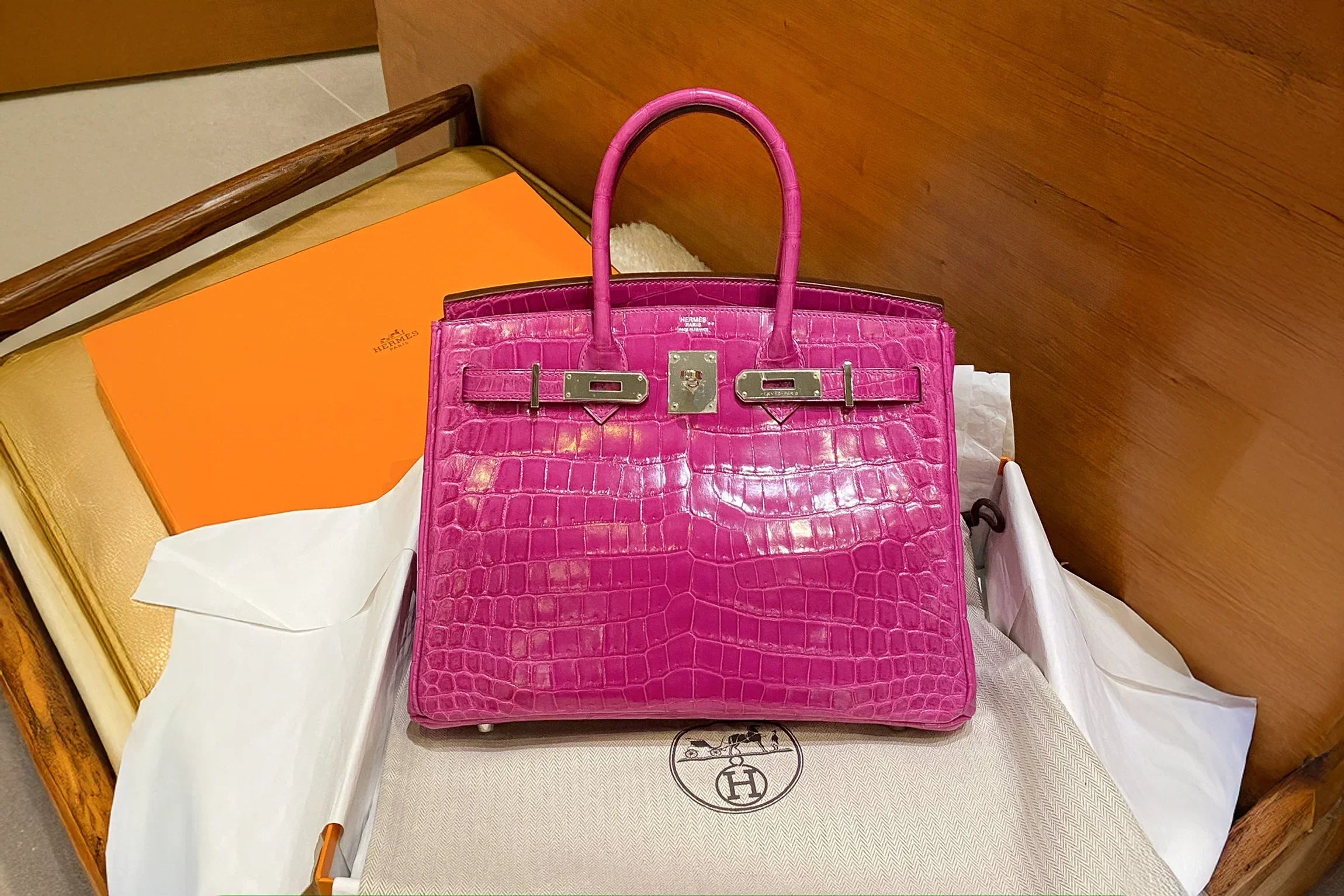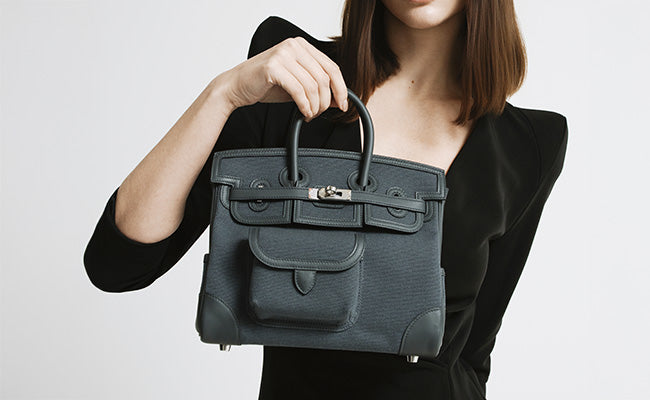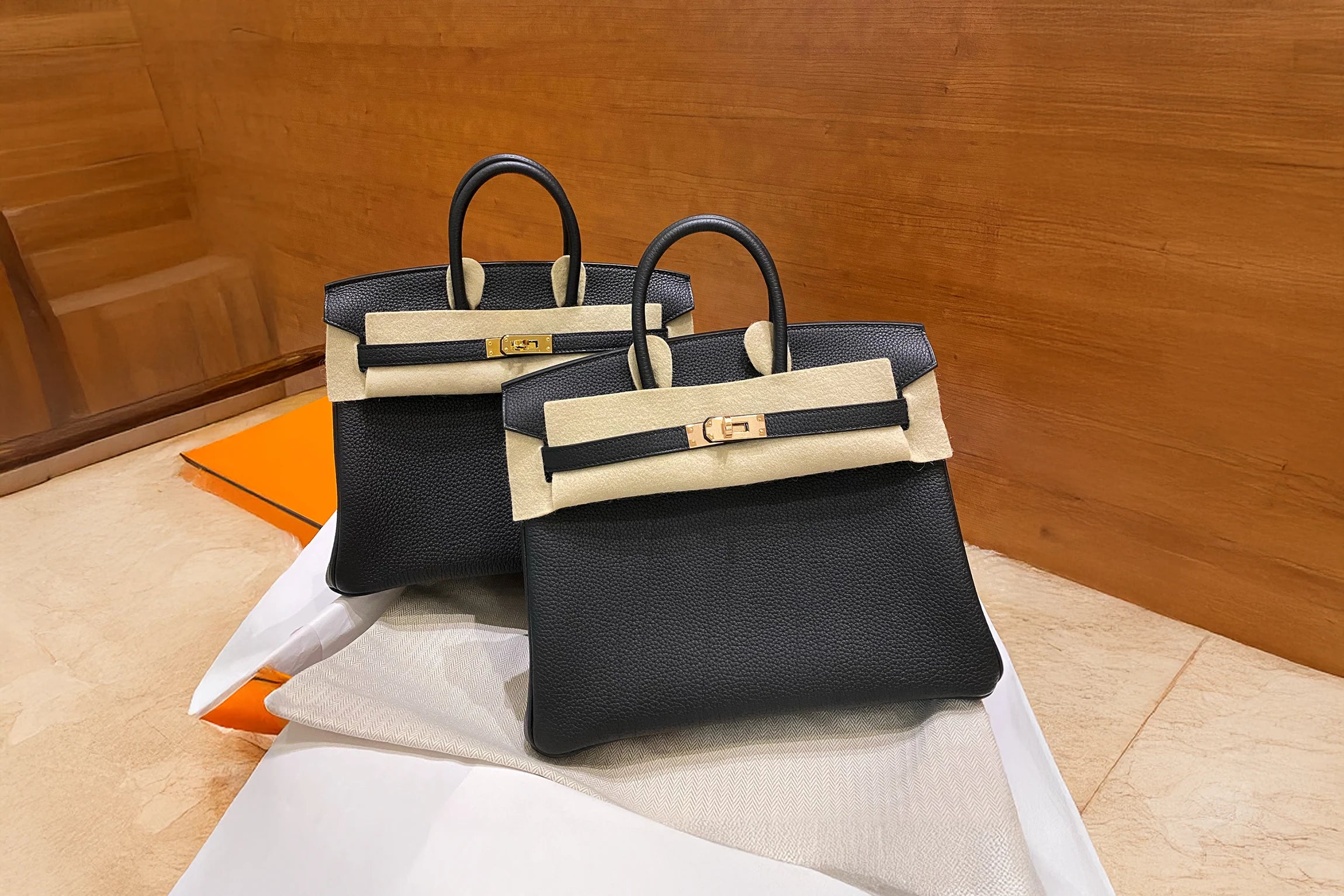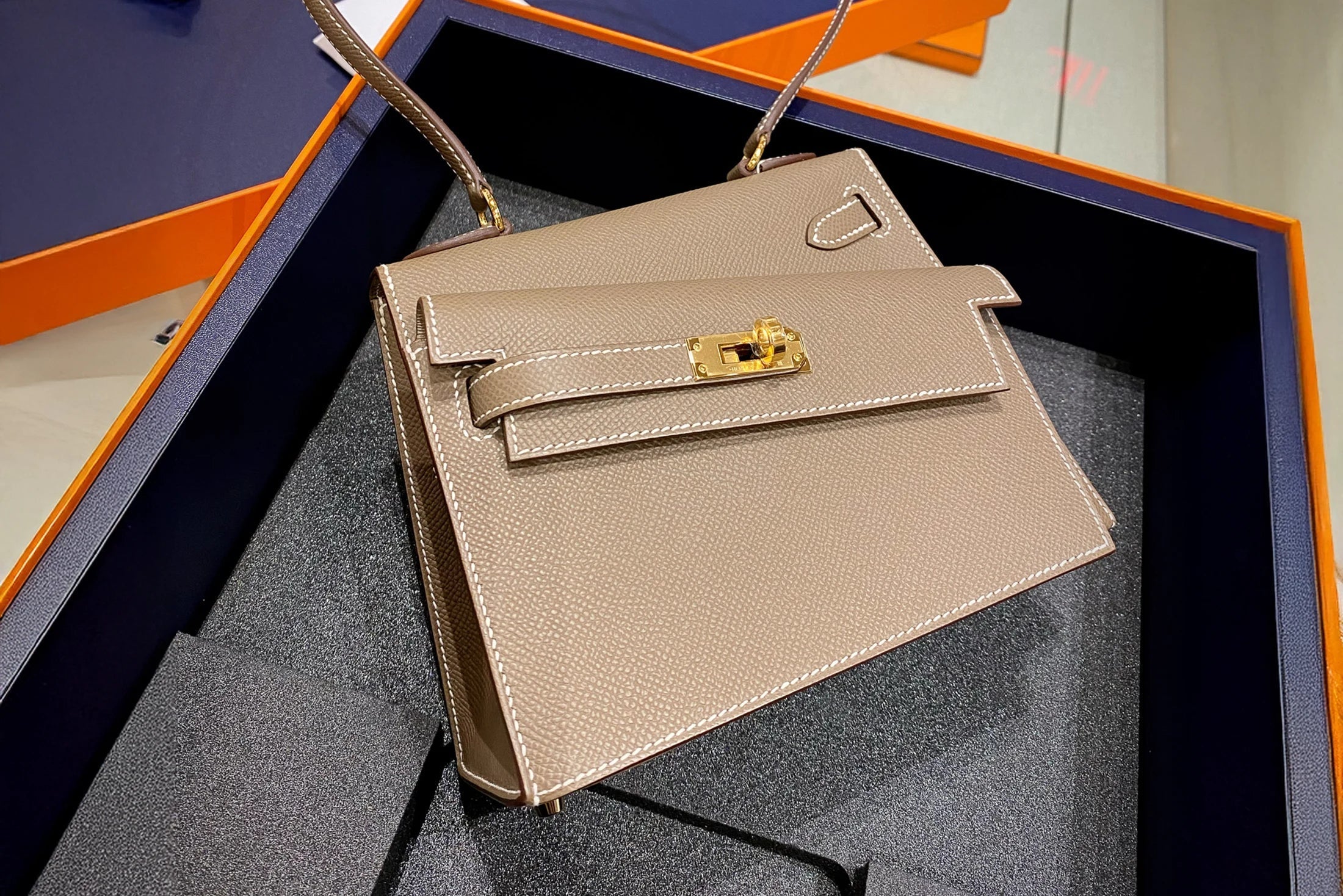
Preventing Common Damage Issues in Hermès Bags: Proactive Maintenance Tips
Check out our Hermès collection and Birkin bags!
Owning a Hermès bag is a special experience, but it also means knowing how to care for something truly valuable. We all want our bags to turn heads for the right reasons, not because of scratches, stains, or droopy handles. With a little regular maintenance and some smart habits, we can usually head off the most common types of damage before they ever show up.
From everyday handling to surprise spills, a bit of attention goes a long way in keeping Hermès bags looking stunning year after year. Here’s what to keep an eye on, what to clean, and when to let the pros take over.
Key Takeaways
- Mindful use and cleaning routines are the backbone of prevention.
- Environmental risks and travel call for extra vigilance.
- Sometimes, only expert care will do.
Recognizing Risk Factors Unique to Hermès Bags
Hermès bags have their own quirks, fragilities that come from the materials and the way they’re put together. Knowing these risks lets us give them the TLC they deserve.
Understanding Hermès Leather Types and Their Vulnerabilities
Hermès uses all kinds of leathers, and each one has its own personality. Togo and Clemence leathers are favorites for their pebbled finish, they shrug off scratches but can slouch if you cram too much inside. Box Calf is all about that smooth, luxurious vibe, but it’s a magnet for scuffs and water marks.
Exotics like crocodile and ostrich need a bit more fussing over. Crocodile really doesn’t like getting too dry or too damp, and it’ll crack if you’re not careful with moisturising. Ostrich? Gorgeous, but the handles darken fast with regular handling.
Table: Quick Guide to Hermès Leather Sensitivities
| Leather Type | Main Vulnerability |
|---|---|
| Togo/Clemence | Softening, slouching |
| Box Calf | Scratches, water spots |
| Crocodile | Cracking, dryness |
| Ostrich | Handle darkening |
Common Damage Points on Bag Structures
It’s not just about leather, structure matters. Hermès bags often get corner wear because the piping sticks out and hits surfaces first. That’s usually where you’ll see thinning first.
Handles get the brunt of hand oils and dirt. On styles like the Birkin, the lock plates and turnlocks are scratch magnets. Straps, if you overload them, can stretch or crack where they connect.
A quick list for reference:
- Corners: Rubbing, leather loss
- Handles: Darkening, cracking
- Hardware: Scratches, plating loss
- Strap Attachments: Stress marks, stretching
Environmental Factors that Threaten Hermès Bags
Canadian weather can be rough on luxury bags. Humidity swings can cause mould or dry out leather if we don’t store bags right. Sunlight fades dyes, especially on lighter leathers.
Heat sources, radiators, hot cars, warp leather fast. Rain’s a biggie too, leaving spots on Box Calf or untreated exotics.
Indoor storage isn’t foolproof either. Plastic traps moisture, but leaving bags unpacked means dust and dings. Dust bags and silica packets help, but nothing’s perfect.
Daily Handling Tips for Long-Lasting Beauty
We all want our Hermès bags to look amazing for years. Tiny changes in daily habits can make a huge difference.
Proper Carrying Techniques
Support the shape when you carry your Hermès. Don’t overload it with heavy or weirdly-shaped stuff, it’ll stretch and bulge.
Try to hold your bag by the handles, not over your elbow for ages. That keeps straps from creasing. If you get caught in the rain, a little bag cover is a lifesaver.
And please, don’t put your bag on the floor or any rough surface. Scratches and stains love that.
Safe Storage Practices at Home
Storing bags right at home really cuts down on accidental damage. Always use the original dust bag and keep your Hermès upright. Fill it with acid-free tissue to hold its shape.
Keep bags away from sunlight and heaters, heat and light fade and dry out leather. Give them some space on the shelf; don’t cram them together.
Every few weeks, air the bag out, check for moisture, and rotate its position a bit. It helps avoid marks and keeps mildew at bay.
Smart Dos and Don’ts During Use
Try to avoid hand cream, makeup, or perfume before handling your bag. Those things can stain leather or hardware. Wash and dry your hands first if you can.
Treat your Hermès with a gentle touch. Don’t toss it around, and always close clasps and zippers to keep the shape. Out and about, keep it away from spilled drinks, pens, and other messes.
Quick reference:
Dos
- Use clean hands
- Close zippers and clasps
- Wipe gently with a soft, dry cloth
Don’ts
- Rest bags on the floor
- Overstuff
- Expose to food, drink, or moisture
Proactive Cleaning and Conditioning Routines
A solid cleaning and conditioning routine keeps Hermès bags looking their best. Listen to what each leather wants, and don’t go overboard with products.
Recommended Cleaning Frequency for Each Leather
Each Hermès leather has its quirks, so timing matters. Togo and Clemence like a gentle weekly wipe with a microfiber cloth. Swift and Box Calf? Handle less, maybe a gentle clean once a month.
Exotics like Crocodile, Lizard, and Ostrich need extra caution. Dust them weekly and deep clean every couple of months. If you use your bag less, adjust as needed.
Here’s a quick table:
| Leather Type | Wipe-Down | Deep Clean |
|---|---|---|
| Togo/Clemence | Weekly | Every 2 months |
| Swift/Box Calf | Monthly | Every 3 months |
| Exotics | Weekly dust | Every 2-3 months |
Gentle Cleaning Products to Choose
Wrong products can wreck a bag fast. Stick with pH-balanced, leather-safe cleaners. For daily dusting, a clean, dry microfiber cloth is all you need. For deeper cleans, go with Hermès-approved leather cleaner or something trusted by luxury bag experts.
Skip household cleaners, baby wipes, and anything harsh. Soft, natural-bristled brushes work for creases but don’t scrub. The basics:
- Microfiber cloths
- Hermès or luxury brand leather cleaner
- Soft brush
- Distilled water (for a little dampening, never soaking)
Applying Moisturisers Without Overdoing It
Even the fanciest Hermès leather dries out, but too much conditioner is a trap. Use something like Hermès Bain or Saphir Médaille d’Or sparingly, maybe two or three times a year, unless your bag faces a desert.
Dab conditioner on a soft cloth and test a hidden spot first. Rub gently in circles, don’t drench the leather. Over-conditioning makes panels limp and sticky, so let bags breathe between sessions. Honestly, less is more.
Preserving Hardware and Decorative Details
Hermès bags are all about those luxe details. Keeping hardware, stitching, and edges sharp takes a bit of effort, but it’s worth it.
Preventing Tarnish and Scratches on Metalwork
That shiny Hermès hardware? Gorgeous, but it picks up tarnish and scratches if you’re not careful. Always handle bags with clean, dry hands to keep oils and fingerprints off the metal. When you’re done, pop the bag in its dust bag and wrap hardware in tissue to avoid marks.
A non-abrasive polishing cloth is good for a touch-up, but skip harsh chemicals. Water spots or fingerprints? Just dab gently with a clean microfiber cloth. For Birkin or Kelly owners, watch the iconic lock and keys, scratches show up there first.
- Keep keys and zippers apart: Separate hardware during storage.
- Rotate bags: Daily use wears hardware down.
If tarnish gets serious, pros can help, but gentle care usually prevents most marks.
Caring for Hermès Stitching and Edges
That saddle stitching and painted edge? It’s classic Hermès, but it’s touchy. Friction, moisture, and rough surfaces can wear threads or chip the edge paint.
Don’t put bags on rough surfaces or stack them. Store upright and don’t overload, so edges don’t stretch. Keep bags dry, never use wet cloths on stitches or edge paint.
Quick tips:
- Check for frayed threads or chipped paint monthly.
- Store in original dust bags and boxes, with tissue for support.
- If stitches pull or paint chips, see a Hermès spa. DIY fixes usually go sideways.
Spotting small problems early keeps Hermès bags looking sharp.
Safeguarding Against Environmental Hazards
Moisture and sunlight are sneaky enemies of Hermès bags. Paying attention to storage and use saves a lot of headaches.
Moisture Prevention and Humidity Control
Humidity can do a number on leather and exotics. Keep Hermès bags in a cool, dry spot, away from moisture. Silica gel packets inside the bag help soak up humidity.
Don’t store bags in plastic, it traps moisture and encourages mould. Use the breathable dust bags from Hermès. If you live somewhere damp, a closet dehumidifier is a lifesaver.
If a bag gets wet, pat it dry gently with a lint-free cloth. Never use a hairdryer or direct heat, cracking and warping are real risks. Check for odour or mould now and then so nothing sneaks up on you.
Protecting from Sunlight and Fading
Sunlight fades dyes and dries out even the best Hermès leathers. Always store bags in shaded spots, closets, not windowsills. If you display them, rotate so one side doesn’t fade faster.
Bright lights indoors can also fade colour over time. UV-filtering window films or curtains help if bags are on display. Never leave bags in hot cars, they’re like ovens.
On sunny days out, toss a scarf or cover over the bag. Keep sunscreen and perfume away from the leather to avoid weird marks.
Travelling With Hermès: Protective Strategies
Traveling with Hermès? A little prep makes all the difference. Careful choices and gentle handling mean your bag arrives looking just as perfect as when you left.
Choosing the Right Travel Storage Solutions
We always toss a structured bag insert inside to help keep the bag’s shape. Overstuffing or packing a Hermès bag empty? Both can wreck the silhouette, creases, dents, the works.
Soft, breathable cotton dust bags are a must for protecting against scratches and moisture on the go. We keep our bags in their original Hermès covers, tucked inside luggage or a roomy tote. If travel means overhead bins, a hard-shell carry-on with enough space for the bag to sit upright, separate from shoes or liquids, works best.
For longer trips, silica gel packets help with humidity. We steer clear of plastic covers because they just trap moisture and can mess up leather.
Airport and Security Tips for Damage Prevention
At airport security, we never send Hermès bags through the X-ray belt uncovered. To cut down on scuffs, we keep them in dust bags and, when we can, ask for manual inspection.
Security staff sometimes want a closer look, so we keep interiors tidy and free of loose pens or cosmetics that might leak. A small bag insert helps keep things in place.
We don't set Hermès bags right on the scanner belt. Instead, we hold them until the last second, lay them down gently in their dust cover, and grab them as soon as possible.
Handling Spills, Stains, and Sudden Mishaps
Accidents happen, even to the most cherished Hermès bags. Maybe it’s a coffee splash or a surprise shower, acting fast is key.
For liquid spills, blot (don’t rub!) the spot with a soft, lint-free cloth. Rubbing just spreads the mess or roughs up the leather.
Different leathers, different moves:
| Material | Immediate Step |
|---|---|
| Togo/Clemence | Blot gently, air dry |
| Epsom | Wipe softly, air dry |
| Swift | Blot gently, avoid water |
| Canvas | Dab lightly, let dry |
If the bag gets wet, let it air dry naturally, far from heat sources. Hair dryers? Big no. They’ll ruin the leather.
Oily stains? That’s when we call a professional cleaner. Home tricks like baking soda or vinegar? Nope, Hermès bags deserve better.
If something spills inside, we carefully empty the bag and gently wipe away any mess. Keeping the interior clean matters, since small spills can leave lasting odors or marks.
A gentle touch and quick reaction can really save the day. Extra care goes a long way, and honestly, the bags look better for it.
When to Seek Professional Hermès Care
Sometimes, DIY just won’t cut it. Deep scratches, stubborn stains, loose stitching, or hardware issues? That’s when we call in the pros. Hermès-trained artisans have skills and tools we just don’t.
Here are times to go straight to the experts:
- Water or oil stains that won’t budge
- Fading, cracking, or big changes in leather texture
- Zippers, locks, or clasps acting up
- Handle or strap repairs
- When we’re not sure how to treat a rare leather or finish
Quick reference:
| Issue | DIY or Pro? |
|---|---|
| Surface dust & light dirt | DIY |
| Deep scratches & stains | Professional |
| Stitching coming undone | Professional |
| Slight scuffs | DIY (with care) |
| Loose hardware | Professional |
For anything major, we stick with the Hermès spa service. No point risking a luxury bag on guesswork. If a problem could get worse or mess with a warranty, it’s worth the peace of mind to let an expert handle it. Sometimes that means shipping the bag to Paris, but honestly, isn’t a Birkin worth the journey?
Frequently Asked Questions
We’re always hunting for smarter Hermès bag care, from clever storage to easy cleaning routines. The goal? Keep bags spotless, supple, and ready to turn heads.
What's the secret to keeping my Hermès bag looking like new for years?
Gentle, regular cleaning with a soft, lint-free cloth clears surface dust. Storing bags in original dust bags helps prevent scratches and keeps light at bay.
We avoid overstuffing and rotate which bag we use, so they keep their shape and don’t get stretched out.
Got any savvy tips for warding off stains on Hermès leather?
Blot spills right away with a dry, clean cloth, don’t wait. We use a leather protector made for premium leathers (but always test a hidden spot first).
We skip contact with denim, pens, and hand creams. Clean, dry hands go a long way too.
What's the best way to pamper a Birkin bag to maintain its iconic status?
We handle Birkins with clean hands and use both handles to balance the weight. Sometimes, we let them rest in their dust bags, stuffed with acid-free tissue to hold their shape.
Annual visits to an Hermès craftsperson for cleaning and touch-ups? Totally worth it. It’s like a spa day for handbags.
Any clever tricks for shielding my Hermès handbag from the elements?
We avoid rain and direct sun when we can. Umbrellas or waterproof covers help if we get caught out.
If the bag gets wet, we let it air-dry naturally, never use a hair dryer or heater.
Where's the absolute perfect spot to store my Hermès treasure?
A cool, dry closet or cabinet with decent air flow is best. We use the original dust bag and keep the bag upright, hardware wrapped in felt for bonus protection.
Plastic boxes or airtight containers? Nope, leather needs to breathe. Roomy storage keeps Hermès bags looking their best.
Could I get a rundown on the essential no-nos for Hermès bag maintenance?
Don’t hang a Hermès bag by its handles, doing that slowly distorts its shape, and trust me, it’s not a look you want. Skip harsh cleaners, baby wipes, or even a wet cloth; those can stain or mess up the leather more than you’d think.
Keep it away from oils, perfumes, and direct heat. DIY repairs? Just don’t. If something’s off or you’re just unsure, reaching out to Hermès for help is always the safest bet.




